How to Upload Images to Wordpress Media Library From Server
Bulk uploading files to your WordPress media library allows you to upload a large number of files or files with large file sizes without the pains of trying to use the WordPress built-in upload functionality. Only while this process tin definitely make your life easier in certain situations, it'due south not quite every bit uncomplicated as just uploading files via FTP. You'll need to complete a few added steps if yous want those files to actually be available inside your WordPress media library. Below, we'll accept you through the full procedure from start to cease.
When Is It Helpful to Majority Upload Files to Your WordPress Media Library?
The regular WordPress media library upload functionality is perfectly fine as long as you're not trying to upload:
- Files with big file sizes (some WordPress sites take a max upload size as low as 2MB past default)
- Large numbers of individual files (call back in the hundreds)
Just there may come up a time when y'all demand to complete one of the above actions. And in those situations, bulk uploading files to your media library via FTP offers a much meliorate solution than trying to use the built-in media library upload tool.
Why Can't You Merely Upload Files Via FTP And Cease In that location?
It's totally possible to bulk upload files via FTP without completing any additional steps. The problem only arises if you want those files to be bachelor inside your WordPress media library.
Come across, once you upload a file via FTP, it'southward alive on your server. That is, you could link to it directly and the file would load. Merely while y'all can link straight to the file, information technology won't appear in your WordPress media library unless you complete a few additional actions to register the uploaded file with WordPress.
So if you desire the files y'all bulk upload to actually appear in your media library, y'all need to consummate the following procedure:
- Upload the files to your uploads folder via FTP
- Use a free WordPress plugin to register the files you uploaded with your WordPress media library
Below, we'll take you lot through all of the steps in particular. Yous don't demand any specialized knowledge to complete the process – just follow along with the screenshots!
How to Bulk Upload Files to WordPress Media Library
In order to bulk upload your files to the WordPress media library, you'll need a few tools and pieces of information:
- The FTP business relationship details for your host – we'll show you how to find these for your Kinsta account. If you're using a different host, you'll need to get those details from your own hosting dashboard.
- An FTP program – a slice of software that allows y'all to upload files to your host. FileZilla is a good free option, merely you can choice another FTP programme if you lot'd adopt.
- Add From Server plugin – this free plugin helps you to register your uploaded files to your media library.
Step 1: Connect to Your Website via FTP
To get started, yous'll demand to connect to your site via FTP or SFTP (understand the difference between the 2 here). SFTP is but short for Secure FTP. Kinsta exclusively uses SFTP, just some other hosts operate on FTP still.
Remember – you'll demand an FTP programme to practice this. We'll use FileZilla in our screenshots, but you can employ a dissimilar FTP program if yous'd like.
To actually connect, you'll need your FTP login details (specifically SFTP for Kinsta). If y'all're using Kinsta, you can find these details by going to the Sites > Your Site > Info in MyKinsta.
In the SFTP/SSH section, you'll need the host, username, password, and port.
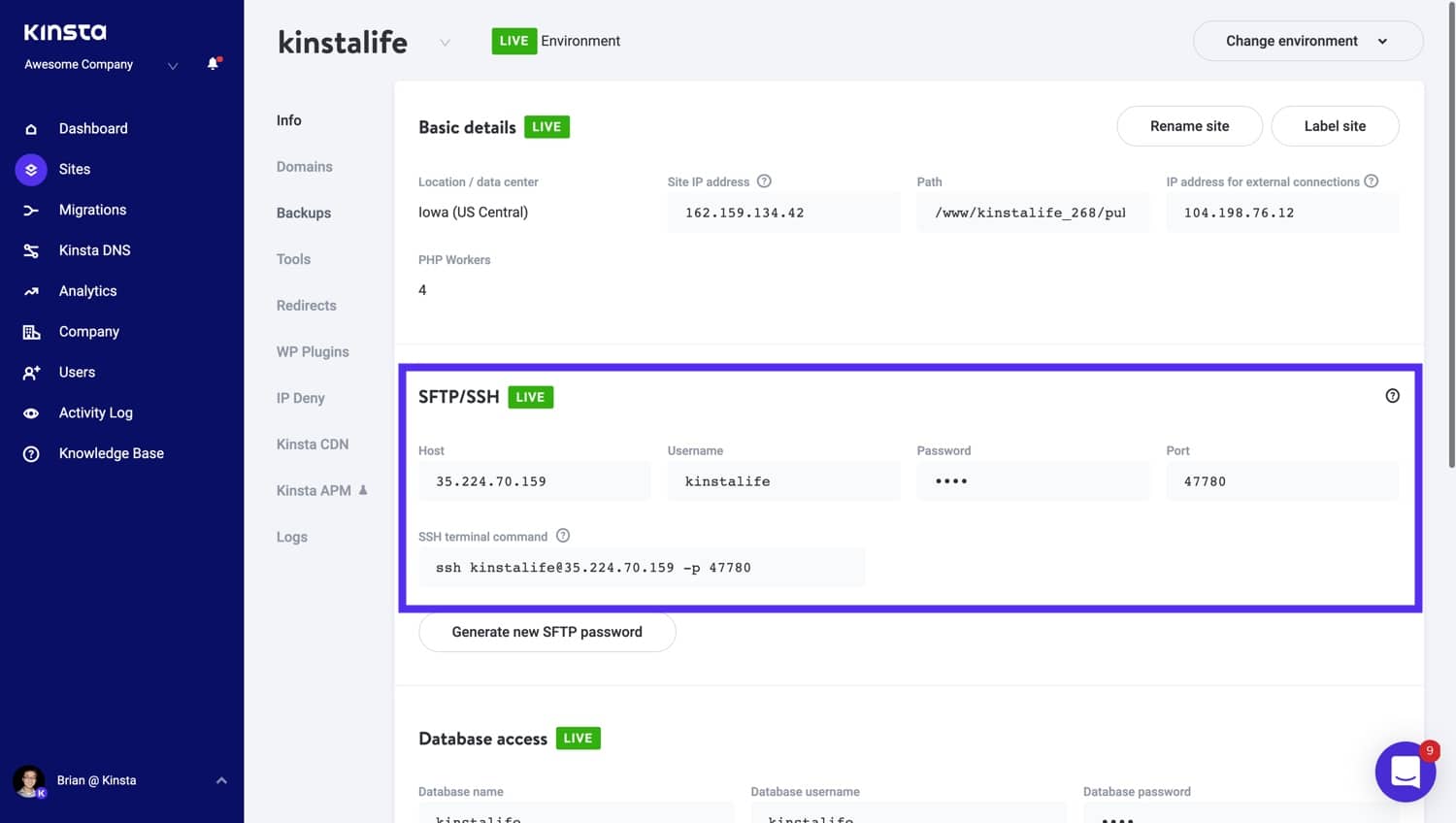
Now, you accept all the data y'all need to connect via FTP. If you're not using Kinsta, you lot should exist able to go this aforementioned data from your host.
Armed with your SFTP details, go back to your FTP program and enter them as follows:
- Host – your host name preceded past "sftp://". For example: sftp://35.224.70.159 . Additionally, some FTP programs allow you to specify the SFTP method in a dissever dropdown. You can view a guide for such programs hither.
- Username – from your Kinsta dashboard
- Password – from your Kinsta dashboard
- Port – from your Kinsta dashboard
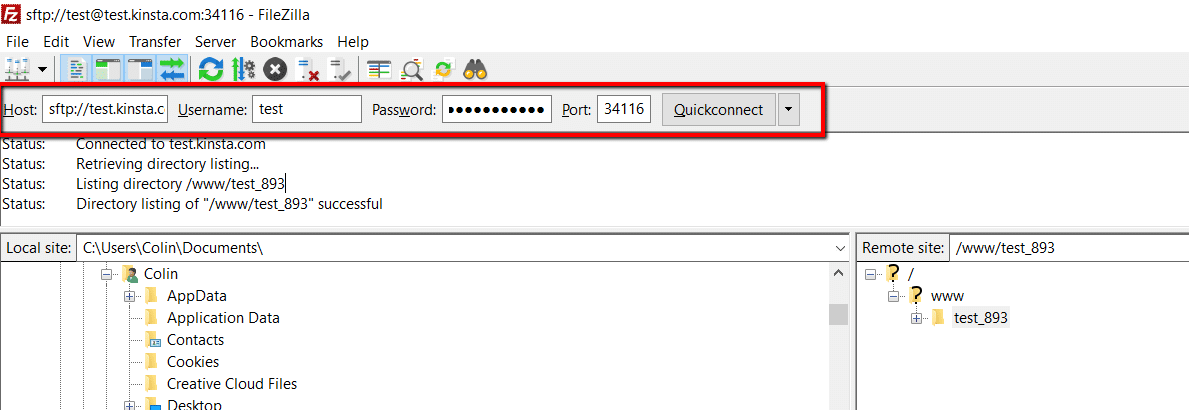
One time you've entered the information, click the Quickconnect push button and FileZilla (or your FTP programme of choice) volition handle the rest.
Subscribe Now
Step two: Upload As Many Files As You'd Similar
At this point, y'all should exist connected to your site via an FTP client. You can ostend this by looking for the Status: Connected to yoursite.com message:

At present, you lot need to upload your files to the uploads folder in your WordPress site. To do that, aggrandize the folder construction of your Remote Site tab in your FTP program past clicking the + buttons. You tin can encounter the file path to follow in the screenshot below:
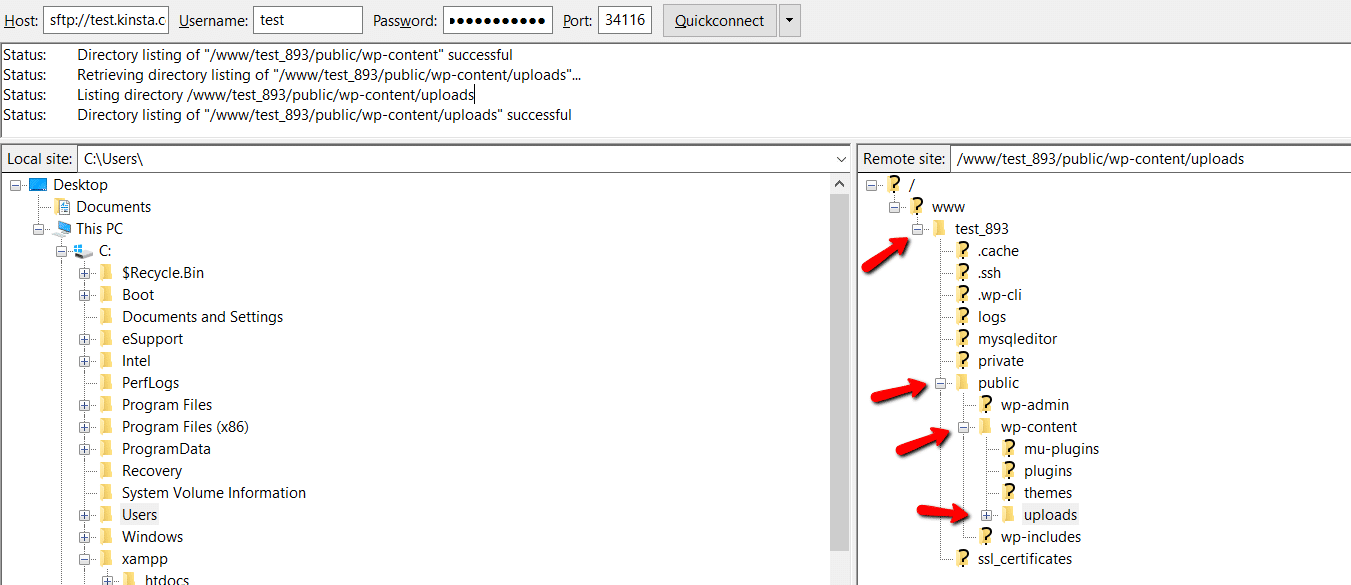
Now, y'all can navigate to the files you'd like to upload in the Local Site tab of your FTP program. All you need to do is drag those files from the Local Site side to the Uploads folder in your Remote Site:

Depending on the size of your files, it might take some fourth dimension for them to upload. But other than waiting for the uploads to consummate, you're now finished with this step.
Pace 3: Register Your Newly Uploaded Files to the WordPress Media Library
Once the FTP uploads terminate, your files are live on your server. But if you get to your WordPress site'southward media library, you lot'll notice that the files are nowhere to be seen:
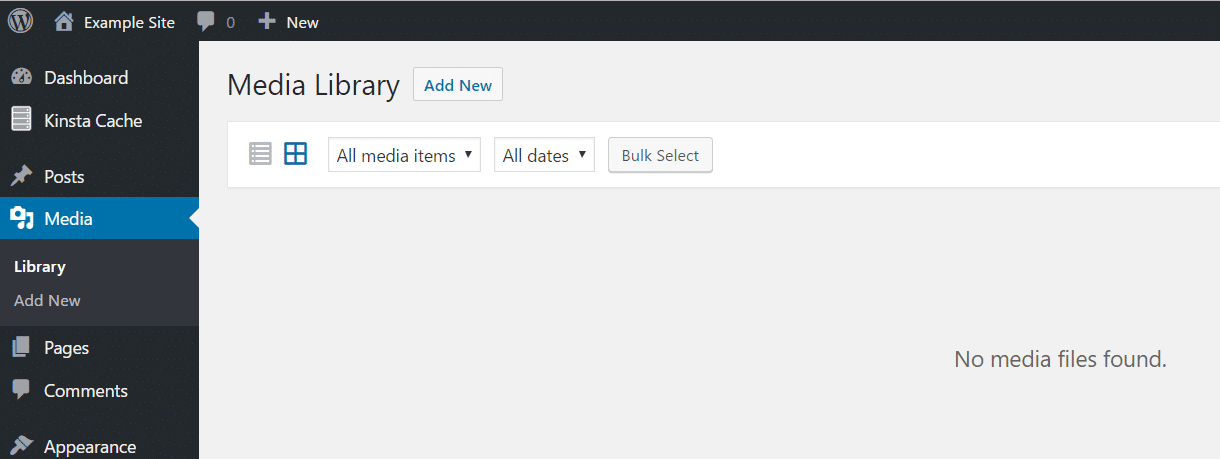
To bring those files into your library, yous need to install and activate the gratis Add From Server plugin.
Once the plugin is activated, you can navigate to Media → Add From Server. So click the uploads folder in the list:
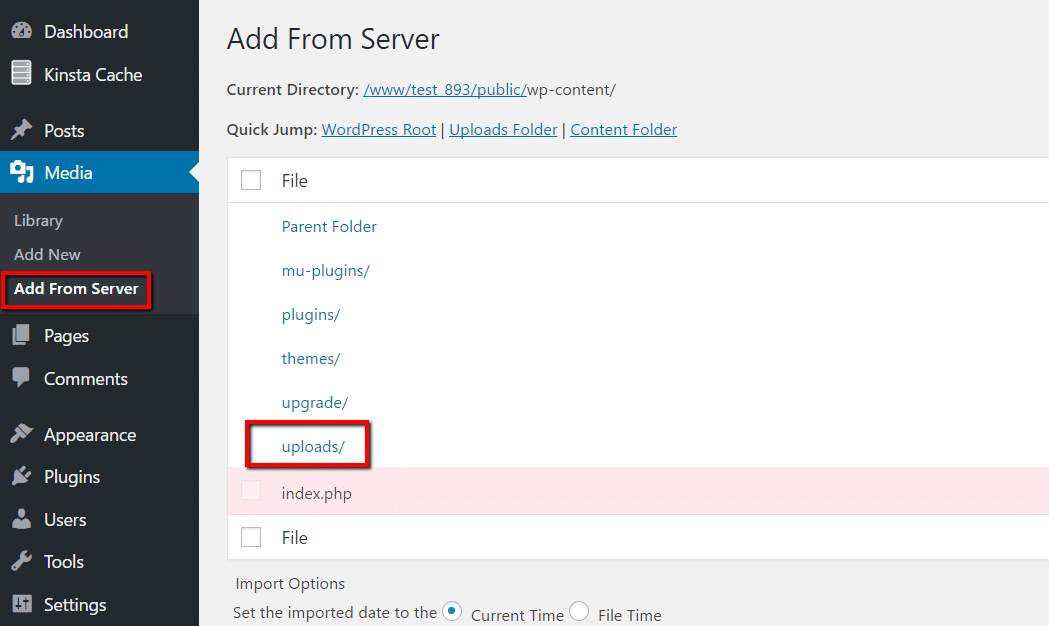
Now, you should see a listing of the files you just uploaded via FTP. Bold you desire to import every unmarried file, you tin just tick the checkbox to Select All (if non, you tin can always select individual files). Then, click the Import button at the bottom:
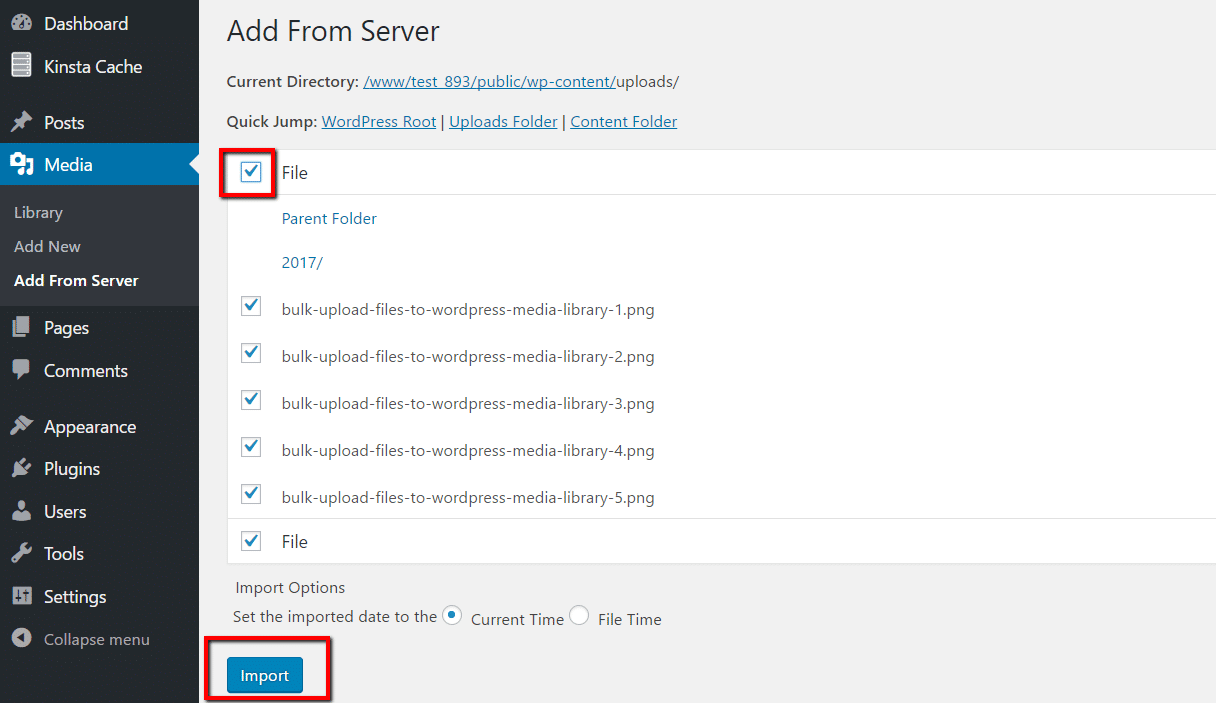
After clicking the button, you lot should see a success message for each individual file at the acme of your screen:

And when you go dorsum to your media library, you should see all of the files y'all uploaded via FTP:
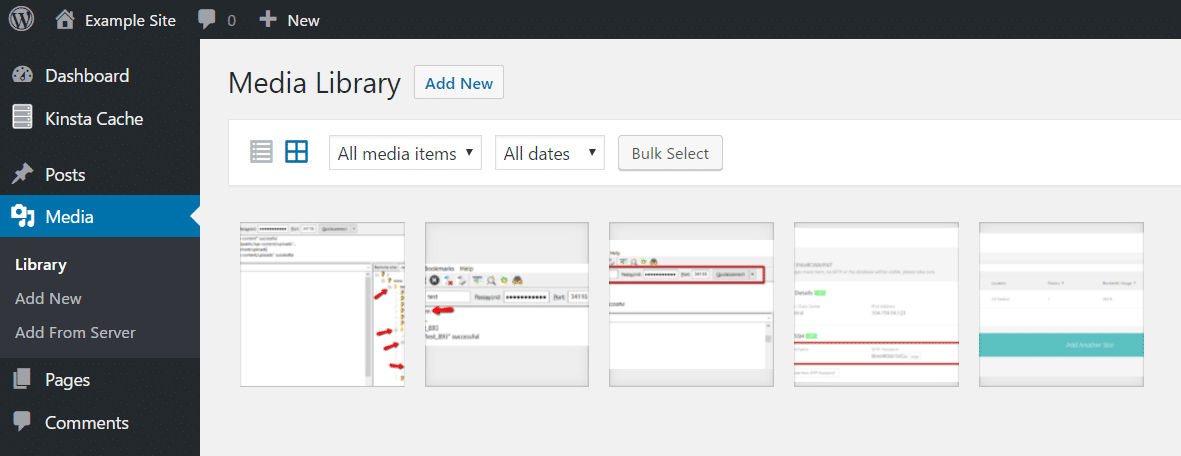
That'due south it! Yous're washed at this point. That's all yous need to do to majority upload files to your WordPress media library. (recommended tutorial: 4 Handy WordPress Media Library Hacks)
Alternatives
Here are a few alternatives you could likewise employ to bulk upload and register files inside your WordPress media library.
- If y'all'd similar a plugin with a little more complex functionality, you tin can try the gratis Media from FTP plugin. The main reward of this plugin is the power to schedule the import procedure to run automatically. Unless you specifically demand this functionality, though, it'due south mostly safer to stick with the transmission approach offered past Add From Server whenever possible.
- You tin can also employ the premium WP All Import plugin to import images from your server.
- If you want to exercise it straight from the command line you can import images using WP-CLI. The
wp media importcommand allows you to create attachments from local files or URLs.
Save time, costs and maximize site functioning with:
- Instant help from WordPress hosting experts, 24/vii.
- Cloudflare Enterprise integration.
- Global audition reach with 29 data centers worldwide.
- Optimization with our built-in Application Performance Monitoring.
All of that and much more, in ane program with no long-term contracts, assisted migrations, and a 30-day-money-back-guarantee. Check out our plans or talk to sales to find the plan that's right for yous.
Source: https://kinsta.com/knowledgebase/bulk-upload-files-wordpress-media-library-ftp/
0 Response to "How to Upload Images to Wordpress Media Library From Server"
Post a Comment